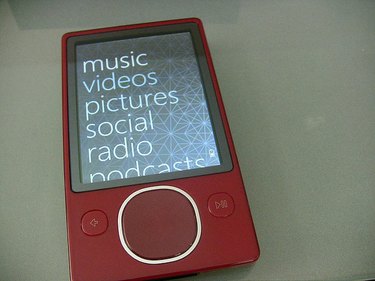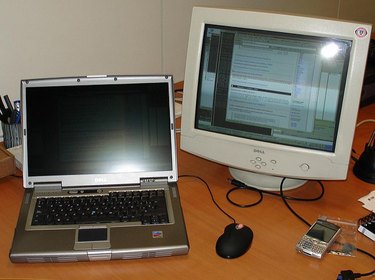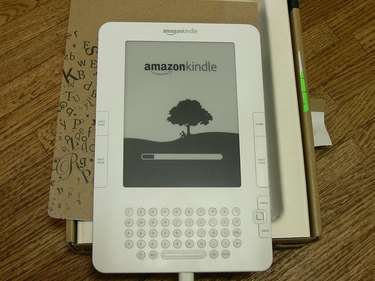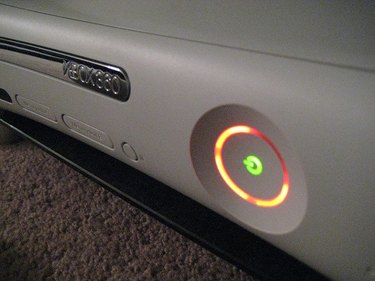Being the first to try out new technology comes with bragging rights and an undeniable cool factor. There are also downsides that can range from an empty wallet to singed flesh.
1. Google Glass
Video of the Day
Launched in 2013, Google Glass sounded like a cool idea to a certain class of geeks who craved information to be literally beamed into their eyeballs, but it quickly ran aground.
Users complained that the interface was difficult and the connection was spotty, while the general public was more concerned about being secretly recorded. Oh, and wearers looked like complete dorks.
2. Hoverboards
It's the future! If your idea of the future means spontaneous combustion, that is. Hoverboards--despite not actually hovering in any way whatsoever--were the hottest must-have toys of 2015, until the lithium-ion battery packs caught fire or exploded.
Nothing says you're cool like being banned from an airplane or a trip to the ER, right?
3. Samsung Galaxy Note 7
Speaking of fire, how could we leave the blazing Samsung off this list? This was supposed to be Samsung's flagship phone and crowning achievement of 2016.
But the villains once again are batteries gone bad, except this time the explosion was in people's pockets, in their hands, or on the nightstand, rather than under their feet.
4. Segway
Part of the problem was the initially secretive marketing campaign that left people wondering what, exactly, this product even was. Some pundits theorized it--which went by the codename Ginger--was going to be a new, efficient kind of power generator.
When the Segway was finally unveiled, it was underwhelming almost from the very start. This self-balancing personal transport (forerunner of the Hoverboard, in fact) originally cost $5,000. The same as a used car, but without all that pesky cargo space and safety devices. Also, in a nation of couch potatoes, it was the laziest method of non-walking ever invented. Awkward and inefficient, the Segway was an expensive punch line you could ride.
5. Microsoft Zune
Meant as a better alternative to Apple's iPod, the Zune MP3 player soon became the new millennium's Betamax. Buying music was a clunky transaction of "points" instead of cash, and few accessories were available.
People flocked to the iPod instead, while the Zune market shriveled like fruit in summer. After three short years, Microsoft swept it into the trash.
6. Rage Wireless Guitar
Wannabe guitar heroes were ready to slay savage tunes on their Wii in 2008, but there was one problem. Due to a misfiring circuit board, those fiery licks could turn into acid burns from battery leakage.
The Rage wireless guitars were recalled, and living room rock stars had to content themselves with air guitars once again.
7. Dell Notebook
Samsung may hold the record for tech recalls at the moment, but Dell had its own epic battery crisis back in 2006, when atitude, Precision, and XPS computer brands.
One laptop reportedly caught fire during a conference, thankfully sparing dozens of people from yet another soul-crushing Powerpoint presentation. Dell blamed battery manufacturer Sony for the snafu.
8. IBM Color Monitor
When you pay $3,000 for a color monitor, you expect certain things: crisp display, clear tones, and not receiving electric shocks while you use it. In 1995, IBM sold a state-of-the-art, 17-inch monitor that was so badly flawed that it could zap people who touched or moved it.
IBM recalled and fixed the monitors, and users were satisfied... at least until a few years later when they bought flatscreen monitors and turned the old CRTs into boat anchors.
9. Microsoft Bob
In between Windows 95 and 98, there was Bob, one of Microsoft's most embarrassing failures. (That's saying a lot from the company who released Windows ME and Windows Vista.) Bob was essentially a user interface that ran on top of Windows, designed to give users uncomfortable with newfangled computers a house-like metaphor in which to run programs and find files.
It was sort of like a late-90s version of Siri, except it was goofier and cost extra. Bob was soon left behind, and Microsoft retained one small element of Bob to torture users for many more years to come: Clippy.
10. Happy Meal Activity Tracker
Even children aren't safe from the dangers of the latest technology. In 2016, McDonald's jumped on the health bandwagon by offering wearable fitness trackers for kids in Happy Meals.
Apparently, the designers were too busy with Big Macs to test the watchband devices, because several kids were reportedly burned or irr
itated on the wrist. More than 30 million trackers were recalled within a few weeks.
11. Apple iMac G3
The iMac line brightened up a dreary 1998 with bold, translucent colors and futuristic design. Too bad Apple kept tweaking what was under the hood. If Apple fans bought a new one each time the specs were upgraded, they had three computers in the space of eight months.
By the end of its first year, the G3 came with more storage, memory, processor speed, color choices and presumably, more teeth-gnashing stress for early adopters.
12. Amazon Kindle
It's the one mystery you couldn't read on the Kindle itself: the Case of the Plummeting Price Tag. When early adopters snatched up the Kindle 2 in early 2009, it was a luxury purchase of $359. Every few months, the price dropped, until spring 2010 when the e-reader was just under $200.
Bookworms who snapped one up at that price soon saw red when the new Kindle 3 was released weeks later, $70 cheaper and with wi-fi capability. Luckily, older Kindles make great Frisbees.
13. iPhone 4
For Apple fans, getting the latest iPhone is like Christmas, Easter and your birthday all rolled up into one. Those who bought the iPhone 4 in the first days, however, realized the newest gadget was like receiving socks from your Grandma. It dropped calls, reception was terrible and Apple denied anything was wrong.
Finally, the company relented, and told consumers that the external antenna was exposed around the phone's outer shell, advising users not to touch the antenna when making calls. This promoted the infamous "you're holding it wrong" meme. One phone bumper later, and everyone was good, except for those few on Day 1 who called their local Apple Genius a few names that would make Grandma blush.
14. Blackberry 5810
The first Blackberry phone sold by RIM in 2002 had everything a caller could want, except for a way to speak and listen. Users had to add an external earpiece with a mic attached so they could make a phone call.
Early adopters who snapped up these Crackberries learned their lesson just a few months later, when the company unveiled three new phones that could actually make calls without additional wires or cords.
15. XBOX 360
Windows users know the Blue Screen of Death, but XBox 360 gamers had their own Red Ring of Death when the console came out in 2007. Like the Eye of Sauron, players never knew when the Red Ring of Death would appear, and soon they feared the omen of crashed games and overheated hardware.
Microsoft pulled $1 billion in repairs and extended warranties from its wizard hat to make the problem go away.
16. HD-DVD
In 2008, two technologies met in the Octagon for a no-holds-barred fight: HD-DVD and Blu-ray. The battle was fierce, but Blu-ray swept the leg and knocked HD-DVD down, leaving it in the dust.
While Blu-ray users did a victory dance, consumers shoved their HD-DVD players into the closet with their LaserDisc machines and Apple Newton tablets.
17. Amazon Fire Phone
If any other phone should have burst into flames, it was the Amazon Fire phone. After all, it has "fire" right there in the name. But no, the Amazon Fire phone was a consumer blaze that never caught wind.
Users abandoned it when they couldn't use basic apps like Google Maps or Starbucks, and the phone's core function was really just to sell stuff on Amazon. The price started at $650, dropped to $200 with a contract, and bottomed out at a mere 99 cents after just eight weeks on the market.
18. Apple Maps
When it launched in 2012, Apple Maps got plenty of people lost, but found tons of late-night punchlines. The directions were often comically wrong, like displaying a nail-biting plunge in the Brooklyn Bridge, or directing people to a Cincinnati airport via the runway.
Apple threw together mapping information from over two dozen sources to create the app, and it showed. Although Apple Maps has improved greatly in later versions, there's still a Tumblr on the topic, celebrating missing buildings and left turns into the sea.











